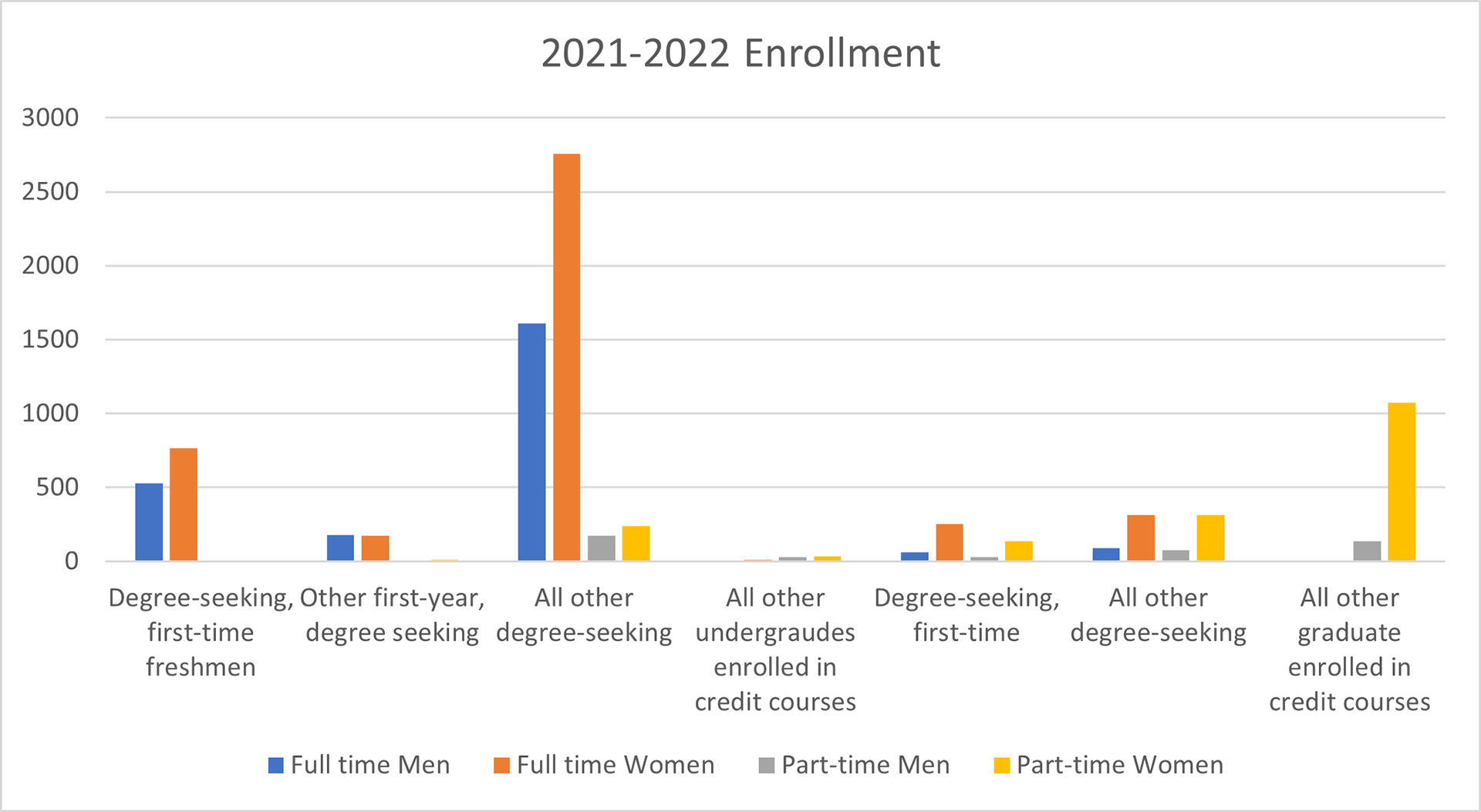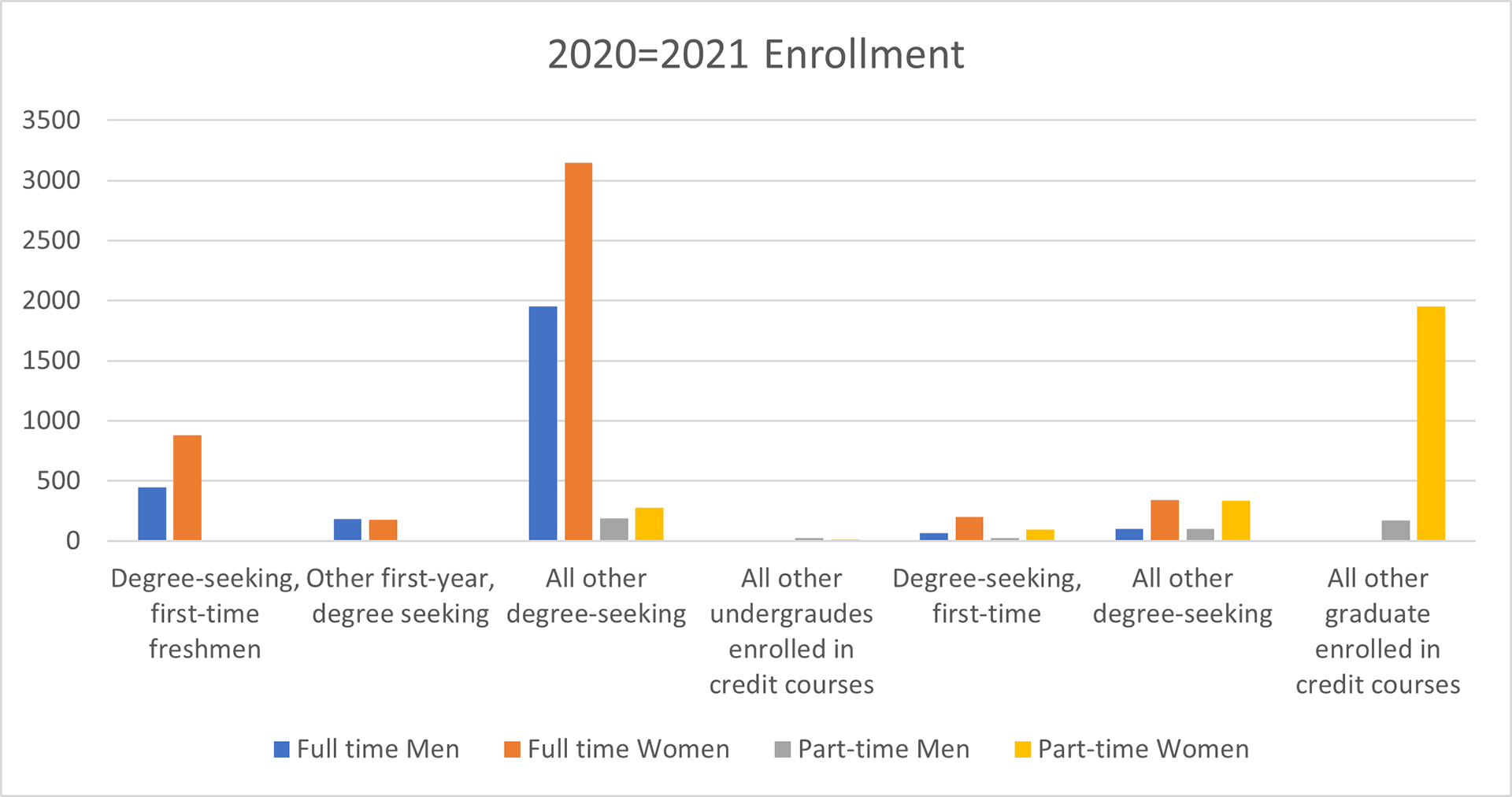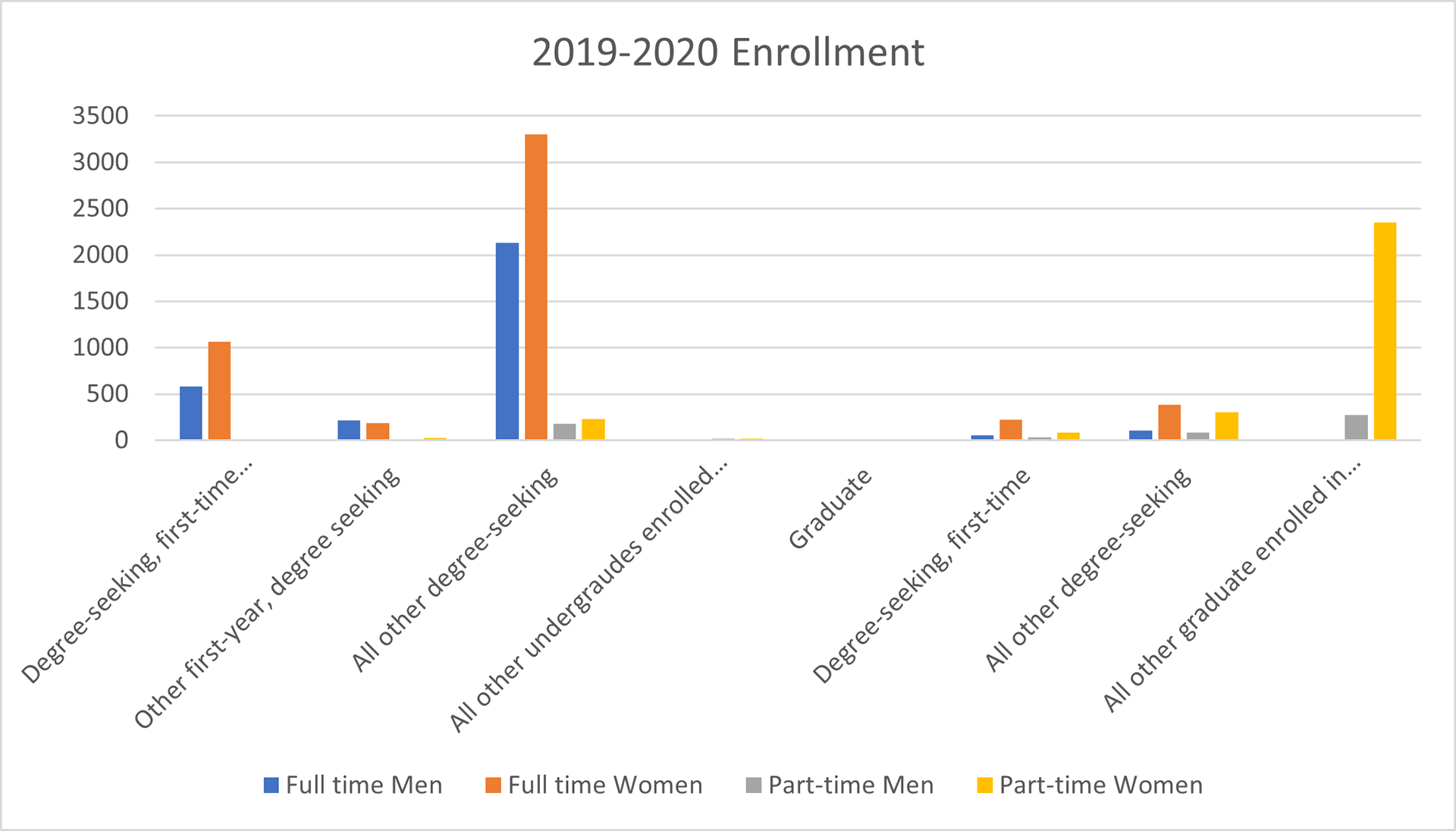Radford University has seen a steep decline in student enrollment since 2018 and the Board of Visitors meeting of February 2022 sheds some light as to how the university plans to remedy this and various other issues.
At 4 pm on February 11, 2022, the Board of Visitors held their second meeting of the new year to discuss various issues, including their largest looming problem of student enrollment and the decline since 2018. According to reports created by the school and sent to the state government, there has been a decline of -8.28% in undergraduate enrollment between 2019-20 and 2020-21 and a decline of -12.19% between 2020-21 and 2021-22. (See graphs below)
The majority of this decline can be explained by the financial and social toll of the ongoing pandemic on students and their families, and due to many students not wanting to attend classes virtually due to the widely held opinion that an online experience cannot match that of an in-person experience. However, due to the current climate and ideas surrounding the expected duration of the pandemic, some students are realizing that while not ideal, and certainly not the college experience they may have wanted, the option of hybrid or fully virtual classes is becoming much more accepted.
Additionally, the board also discussed student retention and their plans to recruit more freshmen from high schools to not only increase enrollment rates at Radford University but also their plans on how to increase and stabilize the declining retention rate.
Based on preliminary research on how applications are being submitted by high schoolers, the data only shows an increase of 4.1% in completed applications from the Fall of 2021 to the Fall of 2022. While the number of applicants increased between 2021 and 2022, there was still a massive decline between 2020 and 2021 and this becomes even more clear when compared to the rate of admittance of students which had dropped 0.7% from the Fall of 2021.
The board also revealed the new plan for a direct admit program that the university will be implementing for the upcoming freshman with the goal of an overall higher retention rate. The plan highlights the fact that for the most part, students must wait until their junior year to go to college which will eventually become their home. For now, this program is being tested at the Davis College of Business and Economics (DCOBE) by instead sending a letter addressing those that plan to go into DCOBE with a welcome letter rather than a letter that states that they will eventually be welcomed. While this program has not been fully rolled out to the rest of Radford University, by starting with the college of business and economics which boasts the largest pool of students, there will be clear data on how it affects retention within the school as well as how the program might affect possible changes to the academic structure and graduation.
With the rollout of this new program and the new president’s focus on creating more opportunities for students to succeed at Radford University, it will be interesting to see how this new program will affect the up-and-coming freshman.
Overall, these programs are meant to help students succeed in the university and prevent them from failing, and yet the board and the university have not addressed the one key issue and that is the pandemic. Radford University is one of the few universities in the country that only did one semester fully online during the Spring of 2020, and then hybrid and online in the Fall of 2020. This commitment to keeping students on-campus and having them stay within the boundaries of the City of Radford is one factor that was not addressed in the meeting that should have been.
With many different variables affecting the decisions of current and future students attending college, Radford University’s decision to create a new program to help students get into their field of interest sooner rather than later could prove vital to both recruiting and retaining students.




